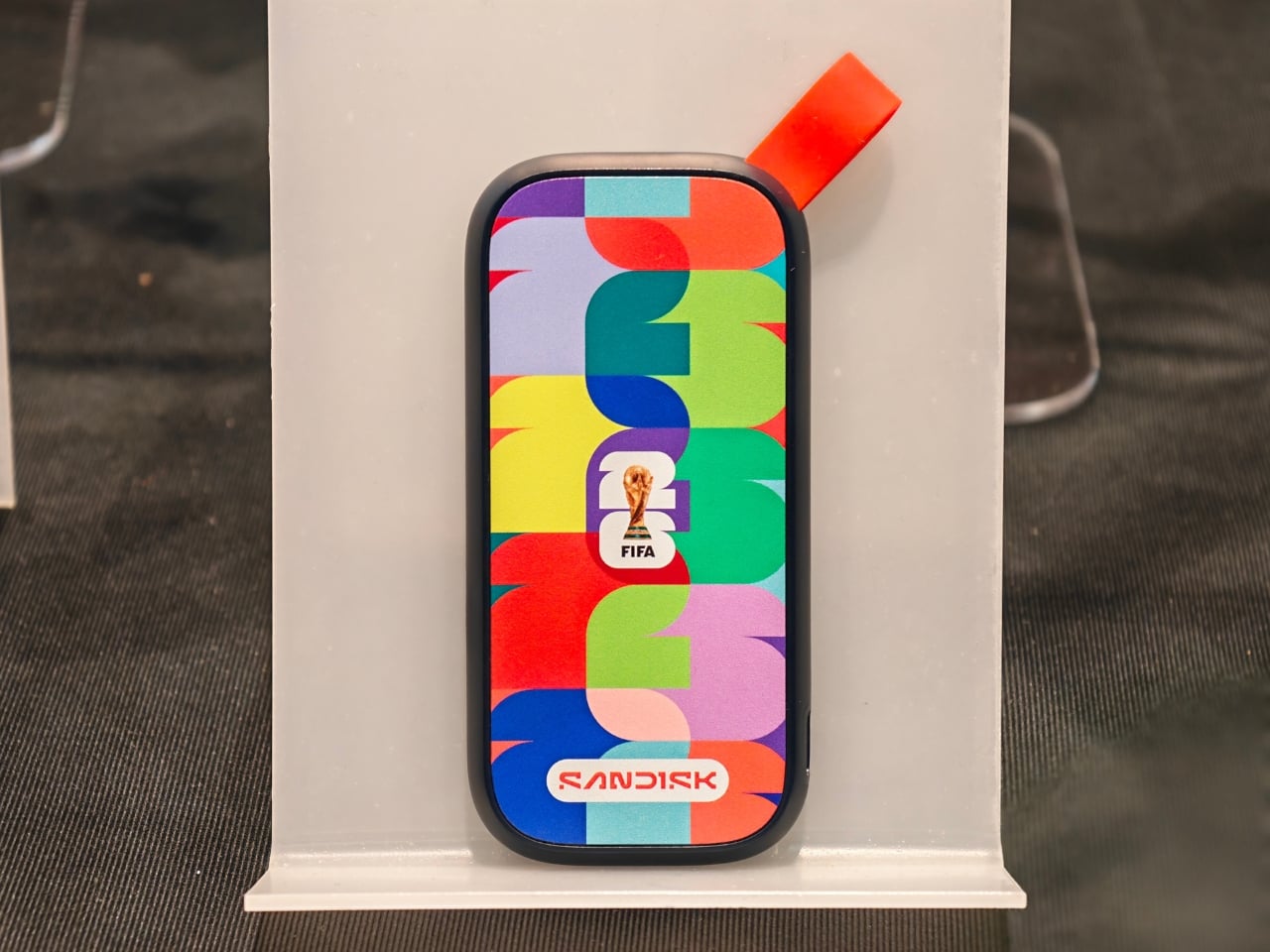
Remember when USB flash drives were just boring little rectangles you’d inevitably lose in your bag? The younger ones who have gotten used to cloud storage or just sending files on messaging services probably don’t even know what flash drives are. Over the last years, they haven’t really been relevant or needed or even interesting especially since they just practically look the same.
Well, SanDisk just tossed that playbook out the window. The storage giant is bringing some serious whimsy to the tech world with two collections that prove functional doesn’t have to mean forgettable. I haven’t used flash drives for some time now but seeing these new designs makes me want to get them and think about what I should actually store in them. Or maybe I can even just get them as a bag charm if I don’t really need them.
Designer: Sandisk

First up is something that’ll have soccer fans doing a double-take. SanDisk has launched an officially licensed FIFA World Cup 2026 collection, and the star of the lineup is a USB-C flash drive shaped like a referee’s whistle. Yes, you read that right. These aren’t just novelty items either. They pack up to 128GB of storage and boast speeds of up to 300MB/s, so you can actually use them to store all those nail-biting match moments and victory celebrations.




The FIFA collection comes in multiple editions celebrating the three host countries: USA, Canada, and Mexico, plus a Global Edition and a premium Gold Edition. Each design draws inspiration from the unique culture of its respective country, turning these drives into collectible pieces that go beyond basic storage. It’s the kind of thing that makes you wonder why more tech companies aren’t having this much fun with their products.



But SanDisk didn’t stop at sports memorabilia. They’ve also teamed up with Crayola to create something that might just be even more delightful: crayon-shaped USB-C flash drives. And we’re not talking about generic crayon shapes here. These drives come in actual Crayola colors with real names like Mango Tango, Cerulean Blue, Electric Lime, and Vivid Violet.



The Crayola collaboration is particularly clever because it bridges the gap between nostalgia and practicality. These adorable drives offer up to 256GB of storage, making them perfect for students, creatives, or anyone who wants their tech to spark a little joy. The drives even come with a three-month subscription to the Crayola Create & Play app and access to Crayola Thinking Sheets, which adds an extra layer of value beyond the hardware itself.




What’s fascinating about both collections is how they challenge the notion that tech needs to look “professional” or minimalist to be taken seriously. There’s been this long-standing assumption in the tech industry that sleek, understated design is the only way forward. But SanDisk is betting that people actually want products that reflect their personalities and interests.
The whistle-shaped FIFA drives are particularly genius from a design standpoint. They come with a lanyard attachment, so you can literally wear them around your neck at matches or viewing parties. It’s functional (you won’t lose it), thematic (referees wear whistles), and conversation-starting all at once. That’s the kind of thoughtful design that makes products memorable.


Similarly, the Crayola drives tap into something deeper than just aesthetics. Crayons represent creativity, childhood wonder, and the freedom to express yourself. By transforming that iconic shape into a storage device, SanDisk is sending a message: your digital creations deserve the same colorful treatment as your physical ones.

Both collections also demonstrate smart licensing partnerships. FIFA World Cup 2026 is one of the biggest sporting events on the planet, and Crayola is an instantly recognizable brand with nearly universal positive associations. These aren’t random collaborations. They’re strategic moves that connect technology with cultural moments and beloved brands. From a practical standpoint, these drives deliver the specs you’d expect from SanDisk. USB-C connectivity means they work seamlessly with modern devices, from smartphones to laptops. The SanDisk Memory Zone app makes organizing and backing up files straightforward. They’re real, functional products that just happen to look fantastic on your desk or in your pocket.


The post SanDisk Just Made USB Drives Look Like Whistles and Crayons first appeared on Yanko Design.










